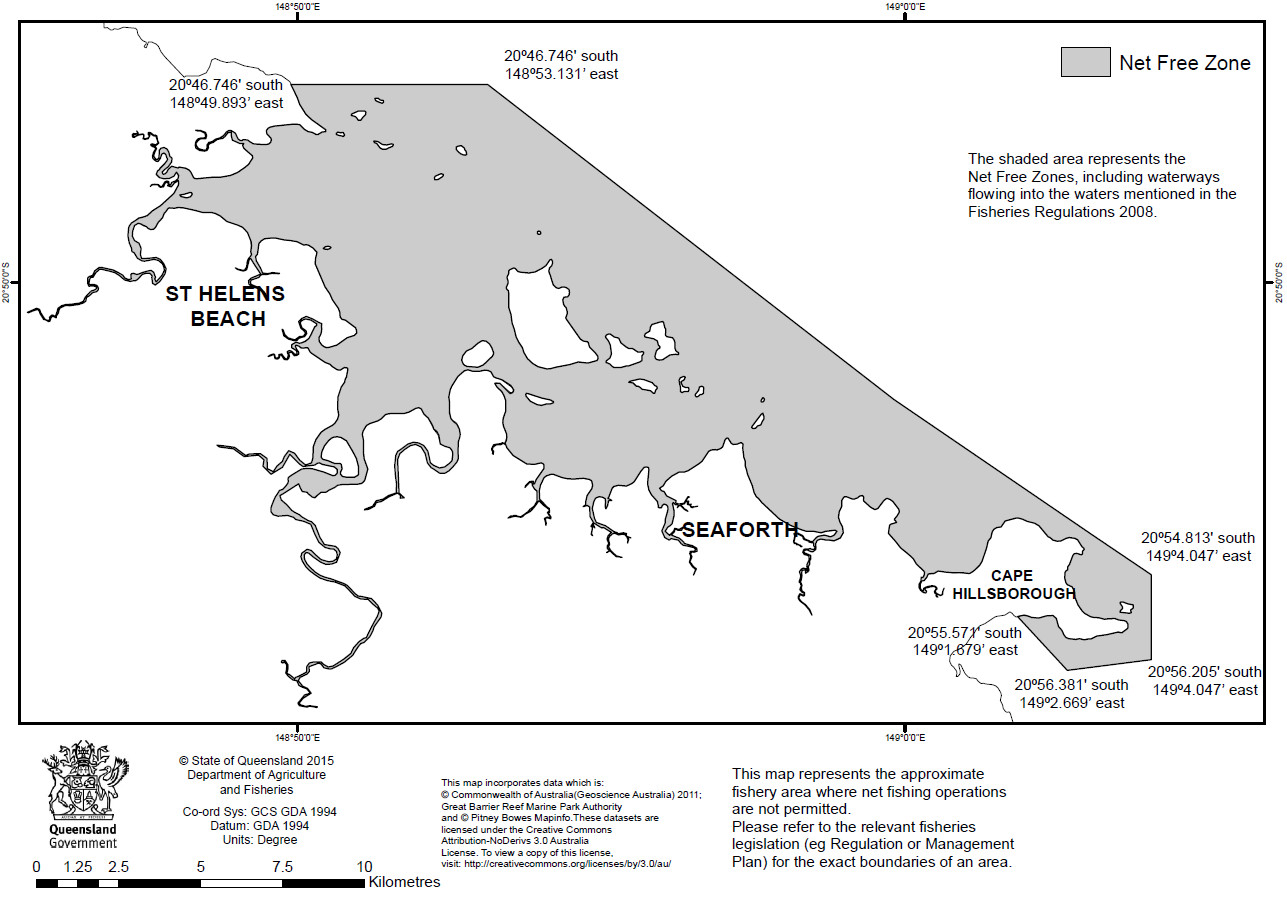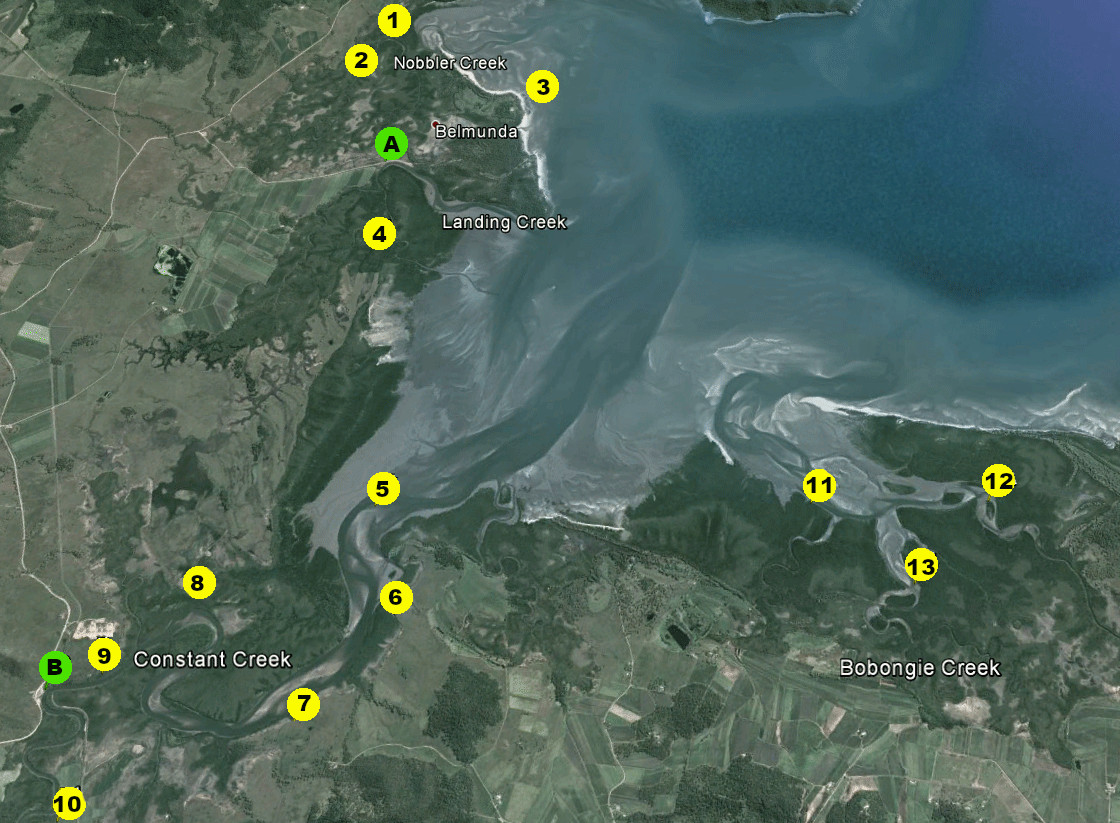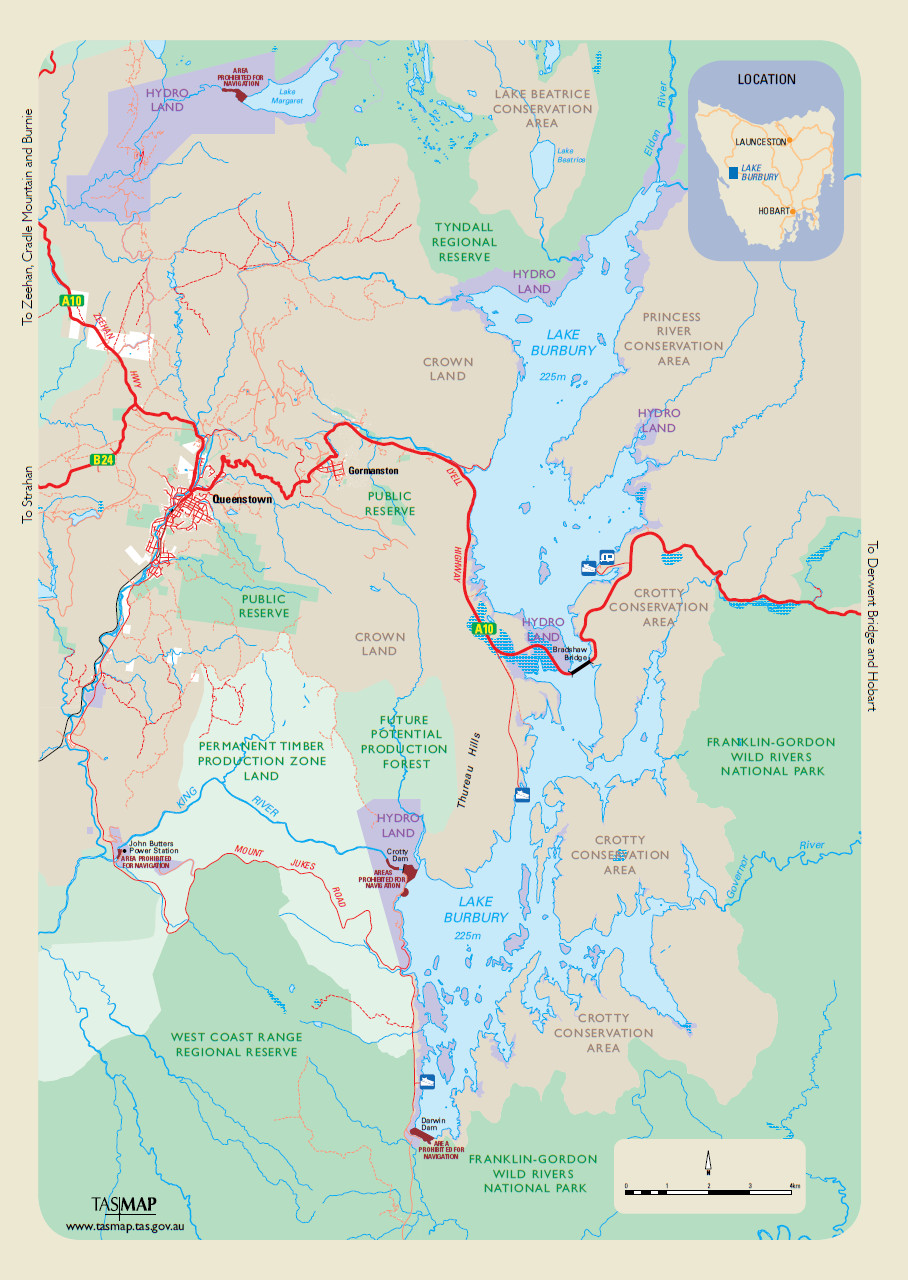

Constant Creek fishing map
Fishing spots
1. Deep water along the bend of this small creek can hold surprisngly good fish. Use livebait of mullet or herring for barramundi and mangrove jacks . Salmon, whiting and flathead are caught along the sandspit at the mouth.
2. Grunter, mangrove jacks and barramundi are caught upstream in Nobbler Creek.
3. whiting, flathead and salmon along the beach at hight itde, best on bigger tides.
4. This small creek has a well defined channel. Worth a look for most local species and mud crabs, try trolling the entrance channel at half tide.
5. flathead along channel edges. whiting on a rising tide. Look for salmon feeding over flats on rising tide.
6. One of the better deepwater spots for barramundi, mangrove jacks , salmon and grunter.
7. Troll the deep bank.
8. Deep bend, livebait works well for most species, including grunter.
9. Trolling area for most species.
10. Barramundi, mangrove jacks , cod and bream on the deep bends.
11. Barramundi and salmon here on a dropping tide.
12. Holes here hold can fish well towards low tide.
13. Good crabbing creek. Be sure to secure pots on bigger tides.
Boat ramps
A – Constant Creek sealed boat ramp.
B – Landing Creek sealed boat ramp.
Belmunda holiday community is located just south of the Cape Hillsborough net-free zone, and has several good creeks nearby, the most popular fishing area being Constant Creek and its associated bay.
Landing Creek and Bobongie Creek are also productive large systems.
Smaller creeks such as Nobbler Creek are worth a look on the biggest tides.
This area is shallow and affected by huge tides, with much of the flats area drying at low tide.
Launching and navigating is easier and safer towards high tide.
Most local fishos launch at high tide, and fish the low and incoming tide, and return to the ramp on the high.
During larger tides it becomes rough when wind and tide are opposed, especially around points.
The water clears during the smaller neap tides. Fish with lures just after dead neaps as the tidal cycle begins to pick up, while the water is still clear.
During bigger tides some areas are suited to tidal lock-in fishing, leaving the boat and walking the holes and channels, casting along the edges where the sand is firm enough to do so.
The tide can come in fast so don’t walk far from the boat.
Fishing fires up after a big summer wet season, with poor fishing in dry years.
The local beaches have flathead, whiting, threadfin and blue salmon, barramundi and bream.
Barramundi are best in warm weather, keeping in mind the Queensland annual closed season.
Deep water in Constant Creek, mainly on its upstream bends, holds barramundi, cod, mangrove jacks and grunter.
Fish tidal drains on an outgoing tide for barramundi and salmon.
Salmon and queenfish can be found along channel edges along the flats on a rising tide.
Work mangrove edges with shallow lures as the tide pushes in.
Bird Rock is a lone rock worth a quick troll at high tide for queenfish and trevally.
Cod, sweetlip. tuskfish (bluebone) and coral trout are within range of a 4m tinnie in good weather.
Mackerel, queenfish and trevally are caught on the inshore reefs by trolling and casting.
Mud crabs are usually about, with numbers varying each year. During big tides pots should be well secured or they will wash away, or at the least the floats will go under.
Nonetheless, big tides can produce plenty of crabs, with the action on the early push in.
Prawn runs are usually good in season, and yabbies (nippers) can be collected for bait on many of the flats.
Collecting yabbies is well worth the effort for the biggest whiting, with the really good fish taken at night by dedicated anglers.
There are launch sites at Constant Creek and Landing Creek.
Belmunda tides
QLD fishing regulations
QLD marine parks
Return to QLD fishing map
Email corrections, additions, pictures or video here.


